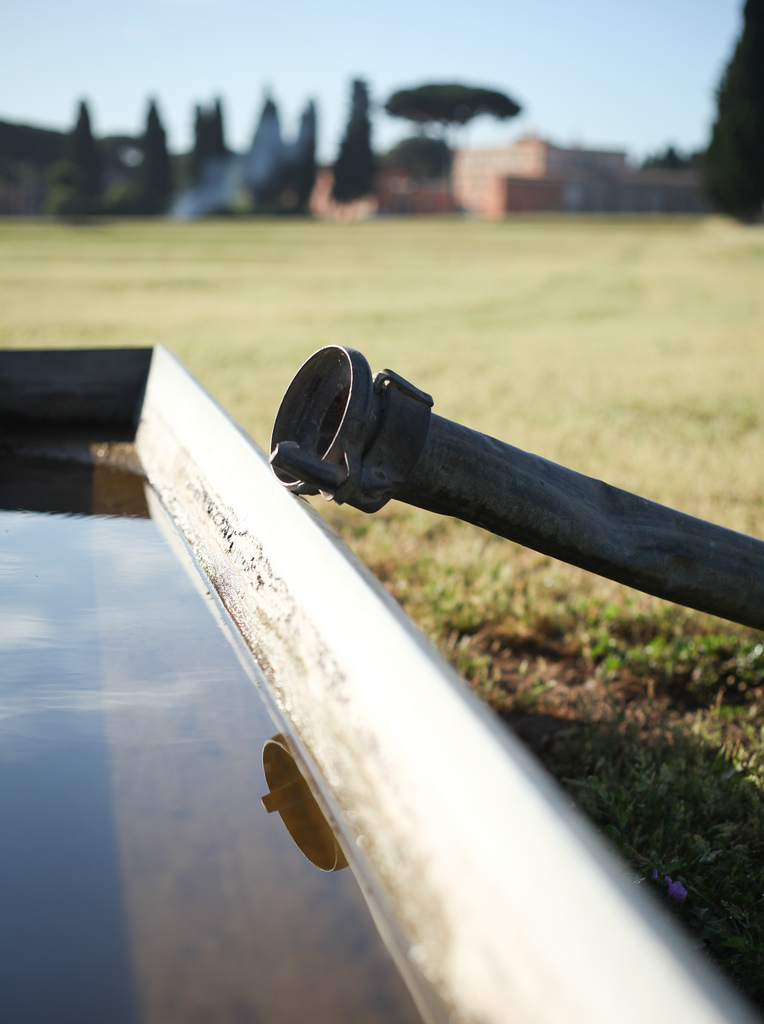Irrigation is the process of supplying land with water. Whether you are an urban gardener or a commercial grower, proper irrigation can make the difference between a lost crop and a bountiful harvest. At the most basic level, irrigation can involve a watering can, a hose, or a sprinkler. On a larger scale irrigation looks a little different.
The ancient Egyptians pioneered basin irrigation, which took advantage of the periodic flooding of the Nile. Dykes surrounding field plots held and redirected the life-sustaining water to the crops. Though many cultures still take advantage of river floodplains, more modern techniques have emerged. Although these techniques differ in how the water is obtained and distributed, all share the goal of distributing water to plants. The four most commonly used irrigation methods are surface irrigation, overhead irrigation, drip irrigation, and subsurface irrigation.
Surface Irrigation
Surface irrigation uses gravity to distribute water. Level basin irrigation, the traditional strategy for growing rice, involves the application of water from dykes to the basin. Furrow irrigation directs water through parallel channels among the crops, allowing gravity to pull it downwards. Similarly, border irrigation directs water across a sloping field using retaining walls built of soil. Although surface irrigation can be efficient and cost-effective, if not managed properly it can result in waterlogging.
Overhead Irrigation
Overhead irrigation operates much like a lawn sprinkler: spray nozzles pump water under pressure onto plants below. Nozzles may be mounted to an overhead pipe network, a water gun, or a moving overhead boom. The latter mechanism either moves across the length of the whole field, or pivots in a circle, evenly watering the radius of the field as it turns. Overhead systems are useful for covering large acreages, and they can be dismantled and moved between fields relatively easily. One major drawback to overhead irrigation is that the crop foliage receives water, creating favorable conditions for pathogens.
Drip Irrigation
Drip irrigation is an excellent method for home gardeners and commercial growers interested in high efficiency. Far more controlled and precise than surface irrigation, drip irrigation provides water directly to the plant roots. Drip irrigation requires a pressurized water source, pipes to carry the water to each garden bed or row, tubing to transport the water along each row, emitter devices, and pressure control valves. This method allows water to be slowly absorbed into the ground, avoiding the losses associated with water runoff. Furthermore, this technique eliminates water loss associated with wind drift and reduces evaporation. Foliar fungal diseases are less common with drip irrigation than with overhead watering, since water is isolated to the root zone. Plastic mulch can be used to cover the drip irrigation, further promoting water retention in the root zone while providing the added benefits of weed suppression and frost damage protection. One disadvantage to drip irrigation is that repair of tubing can be cumbersome and expensive. Rodents may chew tubes, and emitters may become clogged. Because of the latter problem, a filtration unit is essential for a drip system.
Subsurface Irrigation
Drip irrigation can be fine tuned by placing irrigation tubing about five inches below the soil surface using a subsurface irrigation scheme. Although this system may require a higher initial investment, the advantages include minimal evaporation, no surface runoff, and reduced disease. Consequently, the grower saves water and improves yields.
The performance and life span of any irrigation system will depend on its design, operation, maintenance, and suitability for the site. A grower considering irrigation must weigh the advantages and disadvantages of each system, as well as the initial cost.
Byline
Germaine O’Brien is a freelance writer based in Little Rock, Arkansas. Germaine primarily concentrates on agriculture, irrigation, water management, plant science, plumbing systems, general home maintenance and other related issues. Germaine understands that it can be tough to maintain one’s water heater, which is why he recommends that those in need of assistance with their water heater in Houston visit Southern Plumbing.
Image credit goes to notarim.

